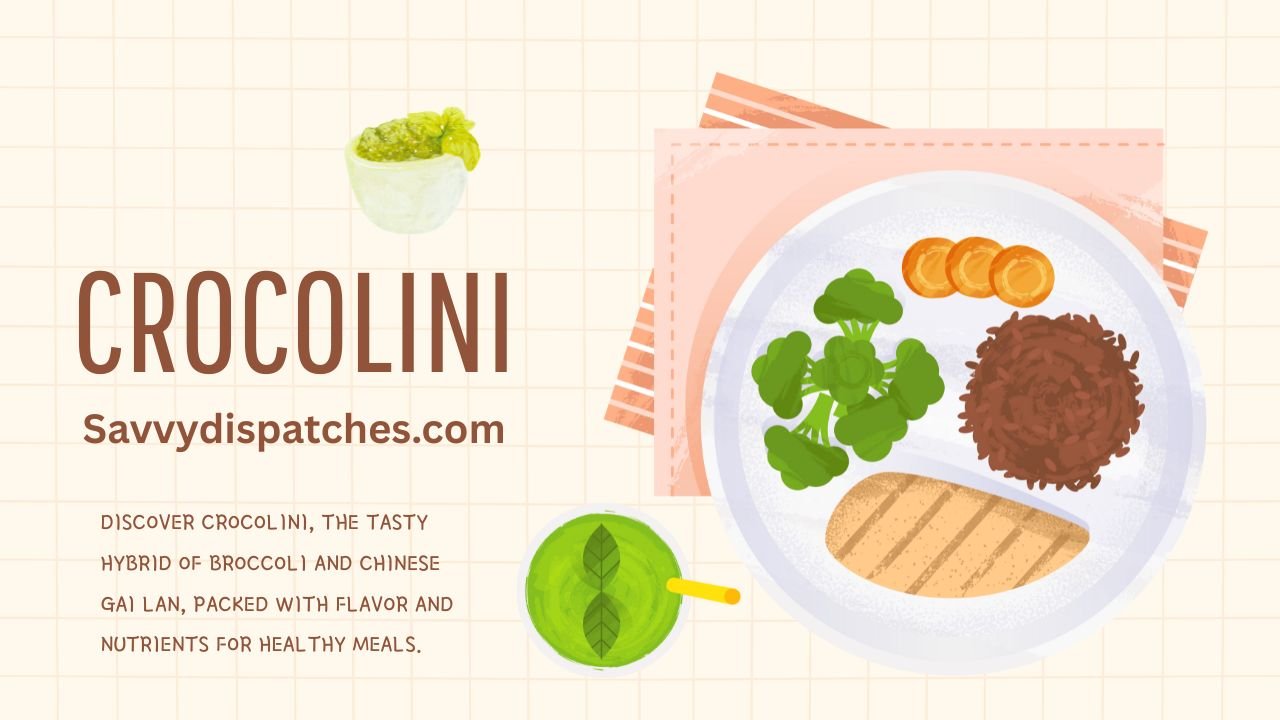Food
Vegetarian Food Nepal: A Journey into Flavorful Plant-Based Cuisine

With its towering mountains and rich customs, Nepal presents a special gastronomic experience that enthrals residents as well as visitors. Though the nation is well-known for its unique Himalayan culture, its vegetarian cuisine is just as remarkable. Vegetarian Food Nepal presents an amazing range of meals that not only taste great but also closely relate to spiritual beliefs and cultural legacy. Strong influences from Ayurveda and Buddhist traditions help Nepali vegetarian food to be both healthy and varied, providing an interesting gastronomic adventure for everyone wishing to follow a plant-based diet.
The Cultural Significance of Vegetarianism in Nepal
In Nepal, vegetarianism is a way of life profoundly shaped by religious and philosophical ideas rather than only a dietary decision. The two most often practised religions in Nepal, Hinduism and Buddhism, support plant-based diets as a way to foster spiritual purity and nonviolence. For ethical as well as religious reasons, many families—especially in the Kathmandu Valley and among Brahmins and Newars—follow vegetarianism.
Celebrated holidays including Teej, Ekadashi, and Tihar highlight the eating of vegetarian cuisine, therefore reflecting the significance of a plant-based diet in Nepalese customs. Further underscoring its importance is the fact even non-vegetarians sometimes follow a vegetarian diet during religious observances.
Traditional Ingredients in Nepali Vegetarian Cuisine
Fresh, locally grown foods are the foundation of Nepali vegetarian cuisine and help to create its distinctive and healthy tastes. Among the main components in everyday cooking are:
- Lentils (Dal): Every Nepali home has lentils, which form the basis of the well-known Dal Bhat and offer a great supply of protein.
- Rice (Bhat): Almost always eaten with every meal, rice is the basis of Nepali cuisine.
- Vegetables: Important ingredients in Nepali vegetarian cuisine are seasonal greens including fenugreek, mustard leaves, and spinach.
- Spices: Enhancing the taste and providing different health advantages are turmeric, cumin, coriander, fenugreek, and Himalayan herbs.
- Dairy Products: Widely used in cooking and giving many meals a creamy texture, curd (dahi) and ghee
Iconic Vegetarian Dishes in Nepal
Dal Bhat Tarkari
Steamed rice (Bhat), lentil soup (dal), and a range of vegetable curries (tarkari) make up a classic Nepali meal. This healthy meal offers a fair mix of protein, carbohydrates, and vital minerals.
Gundruk and Sinki
Traditionally, Nepalis savoured fermented leafy greens called Gundruk and Sinki. These foods high in probiotics improve intestinal health and give soups and stir-fries a sour, earthy taste.
Aloo Tama
Aloo Tama is a staple meal in many Nepali homes; a delicious curry created with bamboo shoots (tama), potatoes (aloo), and black-eyed peas. The somewhat sour and earthy tastes of fermented bamboo shoots produce its distinctive flavour.
Chatamari
Called sometimes the “Nepali pizza, Chatamari is a rice flour pancake topped with fresh vegetables, eggs, or paneer. Those seeking a tasty but nutritious snack should definitely try this Newari cuisine.
Momo (Vegetable Dumplings)
The delicious taste of Nepali momos has earned them fame all across. Comprising cabbage, carrots, and spices, the vegetarian version is equally great as its animal counterpart. Popular both among residents and visitors, it is served alongside a hot tomato chutney.
Sel Roti
A popular traditional snack Sel Roti is a crispy, ring-shaped rice doughnut eaten during holidays and celebrations. Usually eaten with yoghurt or tea, it provides the ideal mix of crunch and sweetness.
Street Food and Snacks for Vegetarians in Nepal
Pani Puri and Chatpate
Without Pani Puri and Chatpate—tangy, hot, and utterly addictive— Nepali street cuisine is incomplete. Made with puffed rice, tamarind water, and fresh vegetables, these treats offer a wonderful explosion of tastes.
Samosa
Popular street food Samosas, loaded with spicy potatoes and peas, are deep-fried pastries eaten alongside chutney. Locals love them mostly because of their crispy outside and delicious filling.
Pakora
A common tea-time snack in Nepal is these crunchy, deep-fried fritters created from veggies and gramme flour. Among the most liked variants are Aloo Pakora and Paneer Pakora.
Health Benefits of a Nepali Vegetarian Diet
Following a vegetarian diet in Nepal has many health advantages:
- Rich in Nutrients: Lentils, entire grains, and fresh vegetables abound in Nepali vegetarian dishes, therefore guaranteeing a balanced diet of vitamins, protein, and fibre.
- Low in Saturated Fat: Minimal usage of harmful fats in traditional plant-based foods helps to support heart health.
- Probiotic Properties: Foods fermented like Sinki and Gundruk help gut health and digestion.
- Natural and Organic: Many rural homes have their own vegetables, therefore guaranteeing a diet devoid of synthetic additions.
Where to Find the Best Vegetarian Food in Nepal
Kathmandu
Many vegetarian-friendly eateries and cafes abound in Kathmandu, the main city. Delicious plant-based cuisine ranging in taste is offered by locations including Ananda Tree House, OR2K, and The Loving Heart Vegan Café.
Pokhara
Pokhara presents a variety of vegetarian restaurants with its breathtaking lakefront views. Among the best sources of nutritious vegetarian cuisine are Little Buddha Café, The Juicery, and Ayurvedic Café.
Lumbini
Lumbini draws lots of vegetarians since Lord Buddha’s birthplace. Many monasteries and neighbourhood restaurants offer basic yet excellent vegetarian cuisine.
Tips for Enjoying Vegetarian Food in Nepal
- Communicate Clearly: Although many Nepali meals are inherently vegetarian, it’s best to ask the cook to be sure to avoid the inadvertent inclusion of meat-based products.
- Try Local Specialties: Every area of Nepal has their own special vegetarian cuisine; so, venture outside the usual Dal Bhat.
- Be Open to New Flavors: Every meal is an adventure because Nepali cuisine has the ideal mix of earthy, sour, and fiery tastes.
Vegan cuisine A dynamic and delicious gastronomic adventure, Nepal reflects sustainability, nutrition, and history. Nepal provides something for any vegetarian visitor or cuisine connoisseur with so many plant-based choices firmly ingrained in its cultural legacy. Whether you’re having Dal Bhat, a platter of vegetable momos, or a crispy Sel Roti, Nepal’s vegetarian cuisine is sure to make an impact.

Food
Grouse Cheese: A Delicacy with Tradition and Flavor

Imagine biting into a creamy, rich cheese that transports you to the lush hillsides where it was crafted. That’s exactly what Grouse Cheese offers—a delightful experience steeped in tradition and bursting with flavor. This artisanal gem is not just another cheese on the shelf; it’s a culinary treasure that connects us to heritage and craftsmanship. Whether you’re a cheese enthusiast or simply looking to elevate your charcuterie board, Grouse Cheese promises to enchant your palate. So, let’s dive deeper into this exquisite delicacy and discover what makes it so special.
The History and Tradition of Grouse Cheese
Grouse Cheese has roots steeped in tradition, originating from the picturesque regions of Europe. This artisanal cheese is often associated with rural communities that have passed down their techniques through generations.
Historically, it was crafted during harvest seasons when milk was abundant. Farmers would gather to share recipes and stories while creating this beloved delicacy.
The production methods are as varied as the landscapes where they began. Each region contributes its own unique twist, influenced by local flora and fauna.
In many cultures, Grouse Cheese embodies a sense of community and celebration. It’s common to find it featured at family gatherings or festive occasions, reflecting both heritage and pride.
As time went on, modern artisans began experimenting with flavors while honoring traditional practices, ensuring this exquisite cheese remains relevant today.
The Production Process of Grouse Cheese
The production of Grouse Cheese is a meticulous craft rooted in tradition. It begins with high-quality milk sourced from local farms, ensuring freshness and rich flavor.
Once collected, the milk undergoes pasteurization to eliminate unwanted bacteria while preserving its natural essence. After this step, specific cultures are added to initiate fermentation.
Coagulation follows, where rennet is introduced to curdle the milk. This process transforms liquid into solid cheese curds. The curds are then cut and heated to release whey, contributing to the final texture.
Next comes pressing and aging; each wheel of Gruose Cheese takes on unique characteristics over time as it matures in carefully controlled conditions. During these weeks or months, flavors develop further through interaction with air and moisture.
Artisans regularly monitor the aging process, ensuring that every batch meets their exacting standards before it reaches consumers’ tables.
Flavor Profile and Pairings for Grouse Cheese
Grouse Cheese stands out with its rich, tangy flavor and creamy texture. The initial taste brings a subtle nuttiness that evolves into a robust, savory finish. This complexity makes it perfect for various culinary applications.
Pairing Grouse Cheese can elevate any dish. It complements fruits like pears and figs beautifully, enhancing their sweetness while balancing the cheese’s richness. For those who enjoy wine, consider a full-bodied red or even a crisp white to contrast the flavors.
In addition to sweet accompaniments, Grouse Cheese works well with artisanal breads and crackers. A simple charcuterie board featuring this cheese will impress guests at any gathering.
Experimentation is key; try adding it to salads for an unexpected twist or melting it over grilled vegetables for depth of flavor. Each pairing reveals new dimensions in both the cheese and your chosen ingredients.
Health Benefits of Grouse Cheese
Grouse Cheese offers a surprising array of health benefits that make it a delightful addition to any diet. Rich in calcium, this cheese supports strong bones and teeth, crucial for overall well-being.
It’s also packed with protein, an essential nutrient for muscle repair and growth. Including Grouse Cheese in your meals can help keep you satiated longer.
Moreover, its unique fermentation process leads to the development of beneficial probiotics. These promote gut health and enhance digestion, offering another reason to savor this delicacy.
The presence of vitamins A and B12 contributes to better vision and energy production. Whether enjoyed on its own or as part of a dish, Grouse Cheese provides nutritional value alongside its exquisite flavor profile.
Adding this cheese to your culinary repertoire not only elevates taste but also enriches your dietary intake in enjoyable ways.
Where to Find and Try Grouse Cheese
Grouse Cheese can be found in various specialty shops and gourmet markets. These locations often pride themselves on curating a selection of artisanal cheeses, including this unique delicacy.
Local farmers’ markets are another treasure trove for cheese lovers. Many local dairies feature Grouse Cheese at their stalls. This allows you to chat with the producers directly and learn about their craft.
If you’re up for an adventure, visit cheese festivals or tasting events. They frequently showcase regional specialties like Grouse Cheese, giving you a chance to sample it alongside other local flavors.
Restaurants that focus on farm-to-table concepts may also include Grouse Cheese in their menus. Whether it’s served as part of a charcuterie board or featured in creative dishes, you’ll likely experience its rich flavor highlights there.
Online retailers now carry Grouse Cheese too. With just a click, you can have this delicious delight delivered right to your doorstep.
Unique Recipes Featuring Grouse Cheese
Grouse cheese is a versatile ingredient that can elevate many dishes. Its rich, creamy texture makes it perfect for both savory and sweet recipes.
Start with a simple grouse cheese fondue. Melt the cheese with some garlic and white wine for an indulgent dip. Pair it with crusty bread or fresh vegetables to create a delightful appetizer.
For something heartier, try grouse cheese in stuffed pasta. Mix it with spinach and herbs before filling your favorite pasta shapes. A light tomato sauce drizzled on top ties the dish together beautifully.
If you’re feeling adventurous, consider using grouse cheese in desserts! Blend it into cheesecake batter for an unexpected twist on this classic treat. The subtle tang balances out sweetness perfectly.
Experimenting with grouse cheese opens up endless culinary possibilities that are sure to impress friends and family alike.
Conclusion: Why You Should Give Grouse Cheese a Try
Grouse cheese is more than just a snack; it’s a celebration of tradition and craftsmanship. With its rich history rooted in artisanal practices, this cheese brings together the flavors of nature and culture. Its unique production process enhances its distinct taste, making it an unforgettable addition to any cheese board.
The flavor profile of Grouse cheese offers versatility that pairs beautifully with various foods and beverages. Whether you enjoy it with fruits, nuts, or wines, each bite reveals layers of complexity that make every tasting experience delightful.
Beyond its deliciousness lies a range of health benefits as well. Packed with nutrients and essential vitamins, Grouse cheese can be enjoyed guilt-free while contributing positively to your diet.
Finding Grouse cheese might require some exploration but the journey is worth it. Specialty shops or local farmers’ markets often carry this gem. Trying recipes featuring Grouse can also elevate your culinary creations at home.
For those seeking something new on their palate or simply wishing to indulge in quality ingredients, giving Grouse cheese a try could lead you down an exciting path filled with flavor and satisfaction. Embrace the opportunity to discover why this delicacy has captured hearts for generations!
Food
Air Fryer Inspiration: A Complete Recipe Roundup for Healthier Cooking

Air fryers have quickly become one of the most beloved kitchen appliances, offering a healthier way to enjoy comfort foods without sacrificing flavor or crunch. From perfectly crisp fries to tender proteins and even surprising desserts, air fryer recipes have revolutionized home cooking. If you’re searching for inspiration, this recipe roundup brings together some of the best air fryer dishes to try. Each one showcases how versatile and time-saving this small but powerful appliance truly is.
Why Air Fryer Recipes Are So Popular
The air fryer works by circulating hot air around food, creating a crispy exterior similar to deep frying but with little to no oil. This not only makes meals lighter and healthier but also cuts down on cooking time. The result? Crunchy textures, juicy interiors, and fewer calories—all from one compact device.
Whether you’re cooking for family, meal prepping, or simply looking for quick snacks, air fryer recipes can fit seamlessly into your lifestyle. Best of all, they’re easy to experiment with, allowing both beginners and seasoned cooks to explore new dishes.
Classic Comfort Foods in the Air Fryer
1. Air Fryer French Fries
No air fryer roundup is complete without mentioning fries. Homemade air fryer French fries are crisp on the outside and fluffy on the inside without the greasy heaviness of deep frying. All you need are potatoes, a drizzle of oil, and your favorite seasonings.
2. Crispy Chicken Wings
Game nights or casual get-togethers call for air fryer chicken wings. They cook up golden and crunchy in under 25 minutes. Toss them in buffalo sauce, garlic parmesan, or a honey barbecue glaze for an irresistible snack.
3. Onion Rings
Love the crunch of onion rings? The air fryer delivers perfectly coated, crunchy bites without the mess of a deep fryer. A panko breadcrumb coating ensures extra crispiness while keeping them light.
Lean Proteins Made Easy
4. Salmon Fillets
Air-fried salmon is quick, healthy, and packed with flavor. A simple seasoning of lemon, garlic, and herbs makes the fish flaky inside with a seared exterior. Pair it with vegetables for a wholesome dinner.
5. Chicken Breasts
Perfectly juicy air fryer chicken breasts are a lifesaver for meal prep. Marinate them ahead of time or use a dry rub. Cooking them in the air fryer prevents over-drying and locks in flavor.
6. Steak Bites
Want restaurant-quality steak without firing up the grill? Air fryer steak bites cook in minutes and taste incredible with garlic butter or chimichurri sauce. They’re perfect for dinner or as a protein-packed snack.
Healthy and Creative Veggie Dishes
7. Roasted Brussels Sprouts
These caramelized little gems come out tender with crispy edges. Add balsamic glaze or Parmesan cheese for an elevated touch.
8. Zucchini Chips
A healthier alternative to potato chips, zucchini chips are crunchy, savory, and addictive. Just slice thin, season, and air fry until crisp.
9. Stuffed Peppers
Bell peppers stuffed with quinoa, black beans, and spices cook evenly in the air fryer, making them a hearty vegetarian meal option.
Unexpected Air Fryer Recipes
10. Air Fryer Donuts
Yes, you can make donuts in an air fryer! Using biscuit dough or homemade batter, these donuts come out light and fluffy without deep frying. A quick glaze or cinnamon sugar topping makes them irresistible.
11. Apple Chips
For a guilt-free snack, try air-fried apple chips. Thinly sliced apples sprinkled with cinnamon transform into crunchy, sweet bites that both kids and adults love.
12. Hard-Boiled Eggs
One of the most surprising uses of an air fryer is making boiled eggs. Many people ask, “can you air fry eggs?” The answer is yes! Simply place eggs in the air fryer basket and cook them for about 15 minutes, depending on your desired doneness. Once done, place them in an ice bath for easy peeling.
Tips for Mastering Air Fryer Recipes
- Don’t overcrowd the basket: Leave space for hot air to circulate for even crisping.
- Shake halfway through: For items like fries or nuggets, shaking the basket ensures even browning.
- Light oil spritz: While most foods don’t need much oil, a quick spray can help with crispiness.
- Use parchment paper liners: They make cleanup easier and prevent food from sticking.
- Experiment with seasonings: The air fryer enhances flavors, so don’t be afraid to try spices, marinades, or coatings.
The Beauty of Air Fryer Cooking
The best part of air fryer cooking is how versatile it is. Whether you’re craving savory snacks, hearty meals, or light desserts, your air fryer can handle it all. It allows you to create restaurant-quality food at home while keeping things healthier and more convenient.
This recipe roundup is just the beginning. From simple weeknight dinners to indulgent weekend treats, air fryer recipes open up endless possibilities in the kitchen. If you haven’t yet embraced the magic of this appliance, now’s the perfect time to experiment with these ideas and make your meals faster, healthier, and more exciting.
Food
Crocolini: A Hybrid of Broccoli and Gai Lan

Welcome to the world of Crocolini! If you’re a fan of unique vegetables, this hybrid delight is sure to pique your interest. Imagine combining the best qualities of broccoli and gai lan, creating a vibrant green vegetable that’s not only delicious but also packed with nutrients. Whether you’re an adventurous eater or just looking for something new to add to your plate, Crocolini offers endless possibilities in the kitchen. Let’s dive into what makes this remarkable veggie so special and explore all it has to offer!
The History and Origins of Crocolini
Crocolini, a delightful hybrid of broccoli and gai lan, boasts a fascinating history rooted in agricultural innovation. This unique vegetable emerged from the creative efforts of horticulturists seeking to combine the best traits of both parent plants.
Originating from Asia, gai lan has long been cherished for its tender leaves and nutrient-rich stems. Broccoli, on the other hand, hails from Europe and is celebrated for its versatility and health benefits. The fusion resulted in Crocolini—an appealing vegetable that offers a mildly sweet flavor with a hint of bitterness.
The development of this hybrid was driven by an increasing interest in healthier diets. Farmers aimed to create crops that were not only nutritious but also adaptable to various culinary styles. As global cuisine evolves, so does the appreciation for innovative vegetables like Crocolini. Its journey reflects humanity’s desire to merge tradition with modern tastes.
Health Benefits of Crocolini
Crocolini is more than just a unique vegetable hybrid; it’s a powerhouse of nutrition. Packed with vitamins A, C, and K, this green delight supports eye health and boosts your immune system.
Its rich fiber content aids digestion and promotes gut health. Including Crocolini in your meals can help maintain healthy cholesterol levels as well.
Additionally, it contains antioxidants that fight free radicals in the body. This means better overall wellness and potentially reduced risk of chronic diseases.
The presence of essential minerals like calcium and iron makes it beneficial for bone health too. Its low-calorie profile also makes Crocolini an excellent choice for those watching their weight while still wanting to enjoy tasty greens.
How to Grow and Harvest Crocolini
Growing Crocolini is a rewarding experience. Start by selecting a sunny spot in your garden. This hybrid thrives in well-drained soil rich in organic matter.
Plant seeds indoors about six to eight weeks before the last frost date. Transplant them outdoors once seedlings are sturdy and temperatures warm up. Space plants about 18 inches apart to allow for optimal growth.
Water regularly but avoid over-saturating the soil. Keep an eye out for pests, as they can be attracted to this unique vegetable. Using organic pest control methods helps maintain the health of your crops.
Harvest when the florets are still tight and tender, usually around 60 days after transplanting. Cut just below the flower head with a sharp knife to encourage further growth from side shoots. Enjoy fresh Crocolini salads or steamed dishes right from your garden!
Ways to Cook and Incorporate Crocolini into Your Diet
Crocolini offers a versatile addition to your meals. Its tender stems and leafy greens bring both crunch and flavor.
One simple method is steaming, which preserves its bright color and nutrients. Pair it with a drizzle of olive oil and lemon for a refreshing side dish.
Stir-frying is another excellent option. Toss Crocolini into the pan with garlic, ginger, and your favorite protein for an easy weeknight dinner.
For a unique twist, try adding it raw in salads. Chop the leaves finely to create texture alongside other greens or grains.
You can also blend Crocolini into smoothies for an unexpected nutrient boost without altering the taste much.
Experimenting with this hybrid vegetable can lead to delightful culinary discoveries that enhance any meal!
Where to Find and Purchase Crocolini
Finding Crocolini can be an exciting adventure. It’s gaining popularity, so many local farmers’ markets might carry it. Check out stalls specializing in unique or organic produce; they often have this vibrant hybrid.
If you prefer online shopping, several specialty grocery websites offer delivery options. Look for retailers focusing on fresh vegetables or heirloom varieties.
Another option is to visit health food stores that emphasize seasonal and locally sourced products. They frequently stock innovative veggies like Crocolini.
For those with a green thumb, consider growing your own! Seeds are available through various gardening suppliers online and at garden centers. Cultivating your own ensures freshness while adding a fun activity to your routine.
Keep an eye on social media platforms too; local farms often post about their offerings along with availability updates.
Conclusion: Why You Should Try This Unique and Nutritious Vegetable Hybrid
Crocolini is more than just a vegetable; it’s an exciting fusion of flavors and health benefits. This unique hybrid offers the best of both worlds, combining the crispness of broccoli with the tender leaves of gai lan. Not only does it stand out in taste, but its nutritional profile is impressive as well.
Incorporating Crocolini into your meals can add variety to your diet while providing essential vitamins and minerals. Whether you sauté it, steam it, or toss it in salads, there are endless ways to enjoy this vibrant green vegetable.
Finding Crocolini may require some effort since it’s not as commonly available as other vegetables. However, specialty grocery stores and farmer’s markets often carry this gem during peak season.
If you’re looking for something new to excite your palate and enhance your meals with health benefits, give Crocolini a try. It’s a delightful addition that can elevate any dish while nourishing your body at the same time. Explore this hybrid today—your taste buds will thank you!

 Blog10 months ago
Blog10 months agoHow to Deal with Scabies While Traveling

 Travel10 months ago
Travel10 months agoRichmond, Virginia Street Art Guide

 Travel10 months ago
Travel10 months agoPerhentian Islands: How to Get There, What to Expect, & More

 Travel10 months ago
Travel10 months agoHow to Live in Your Car in New Zealand

 Travel10 months ago
Travel10 months agoSouvenir in Nepal: A Guide to Unique Handicrafts and Cultural Treasures

 Travel10 months ago
Travel10 months agoVegan Guide to Dining Out in Richmond, Virginia

 Travel7 months ago
Travel7 months agoA Local’s Guide to Sanibel Island, Florida

 Travel7 months ago
Travel7 months agoVisiting Lumbini, the Birthplace of the Buddha













